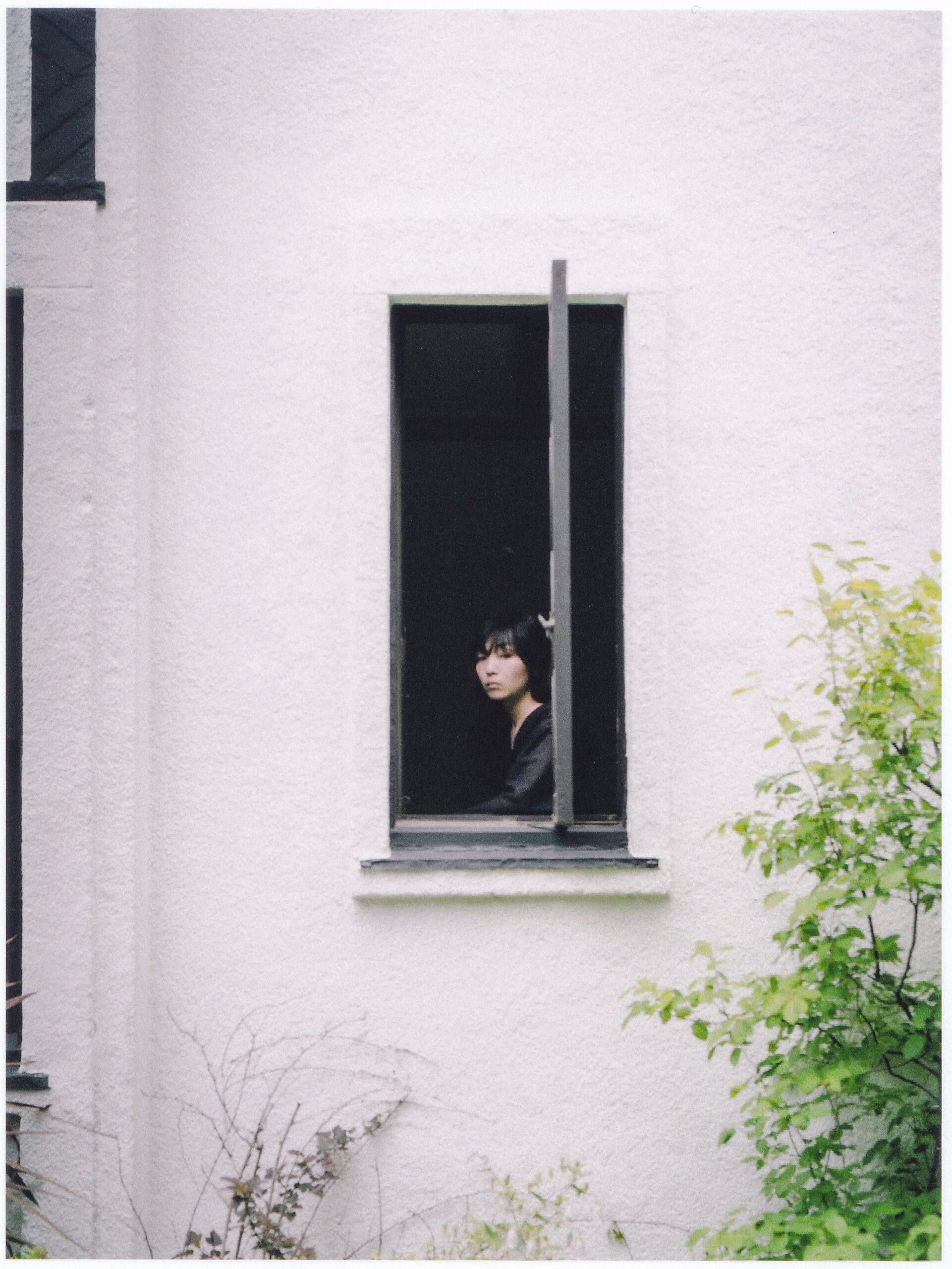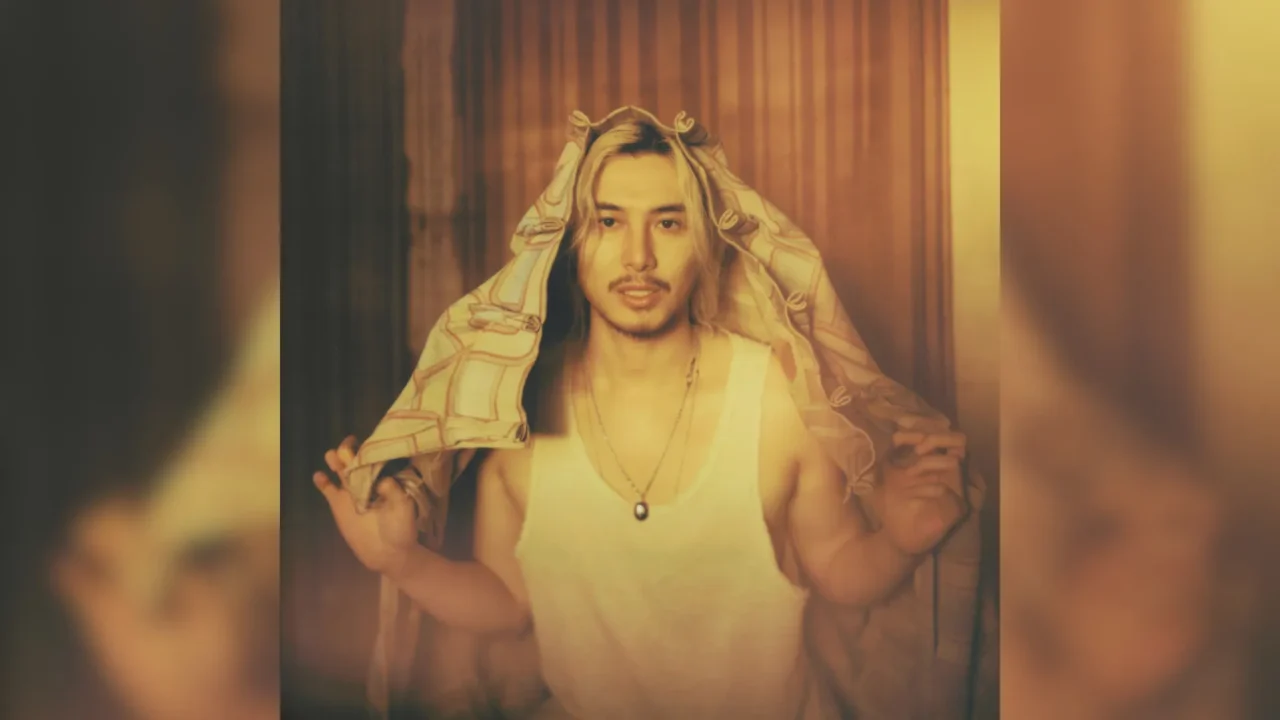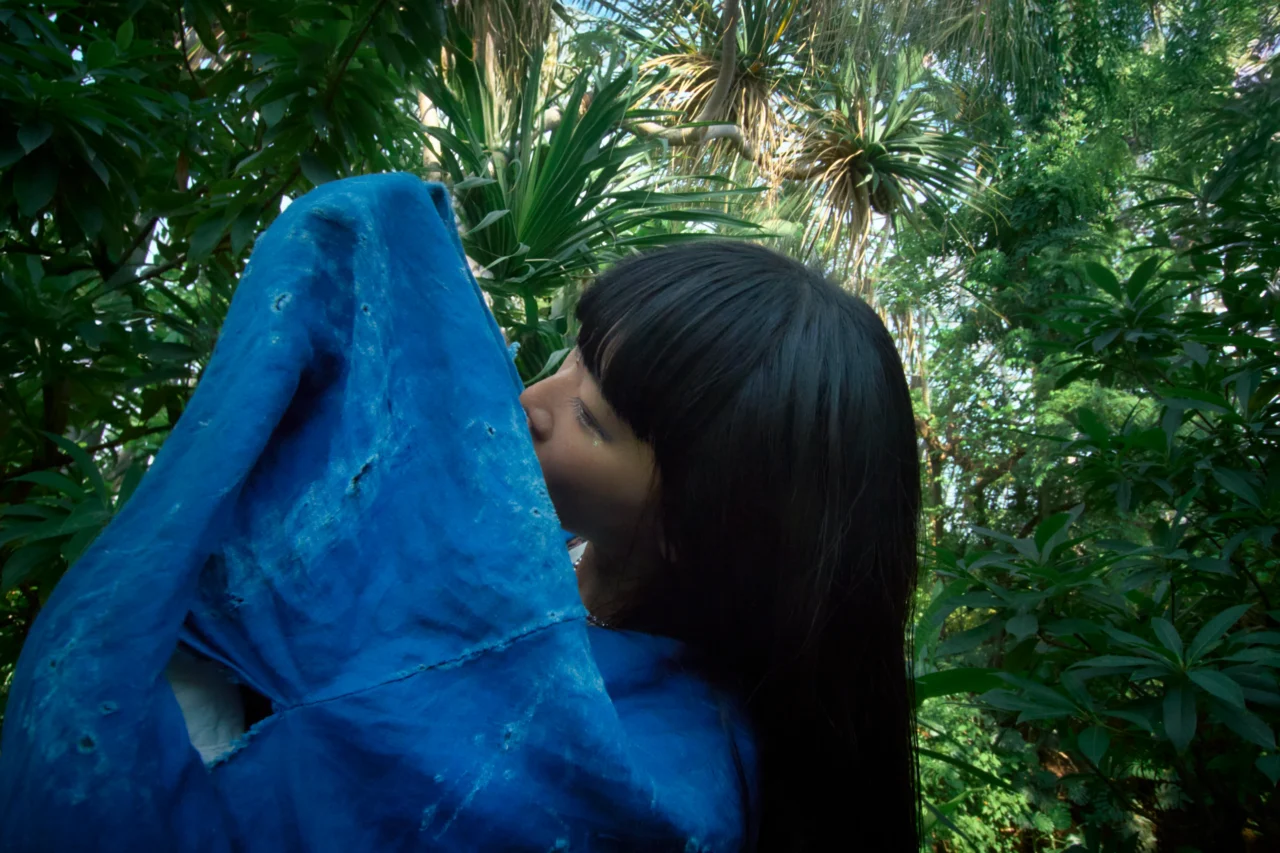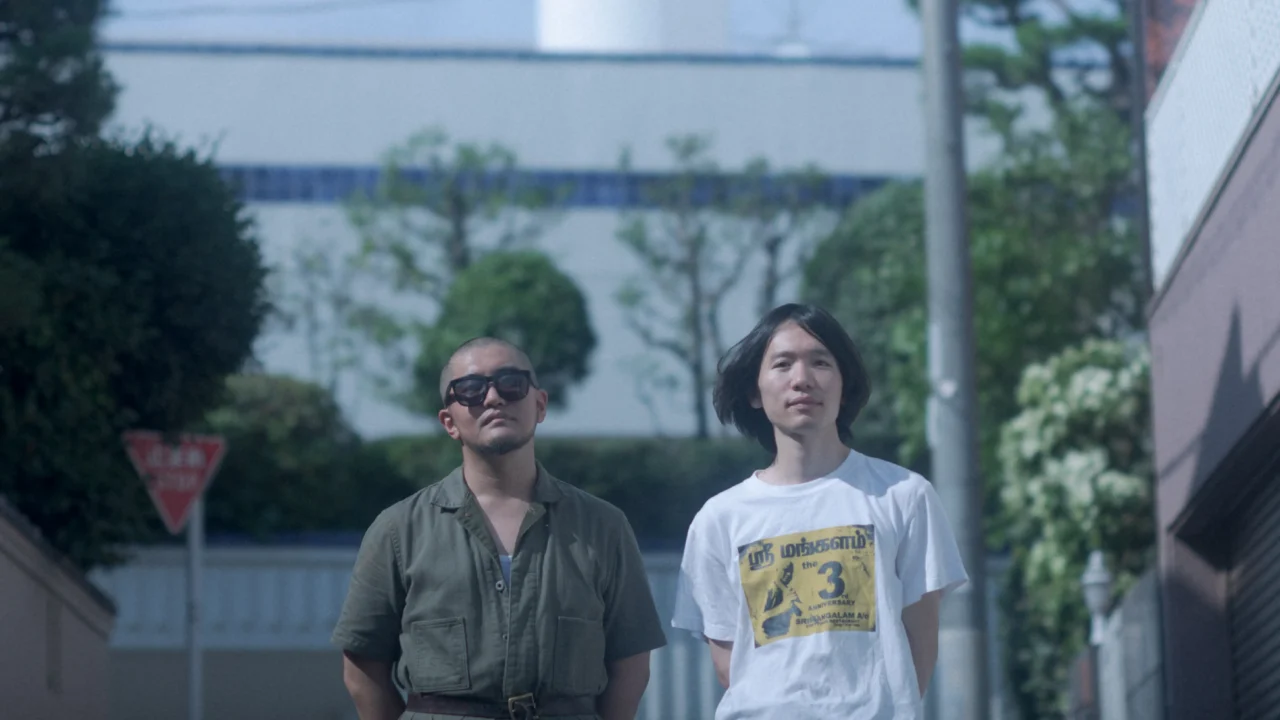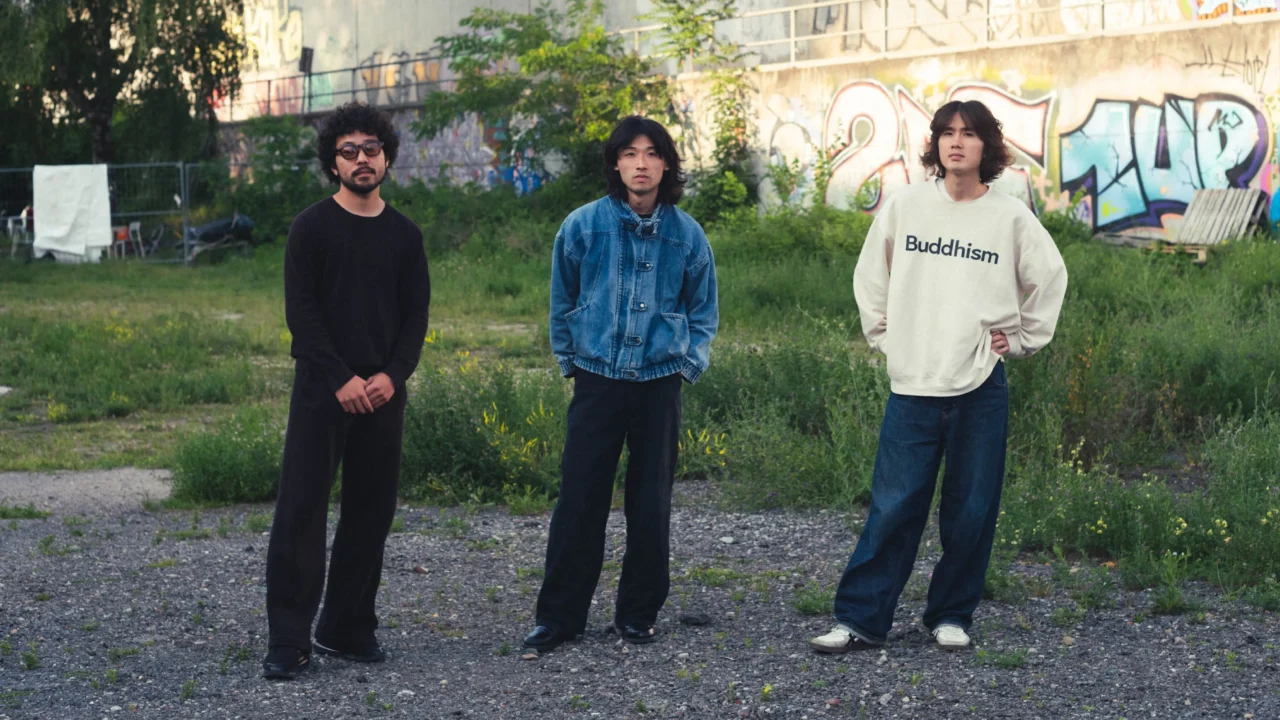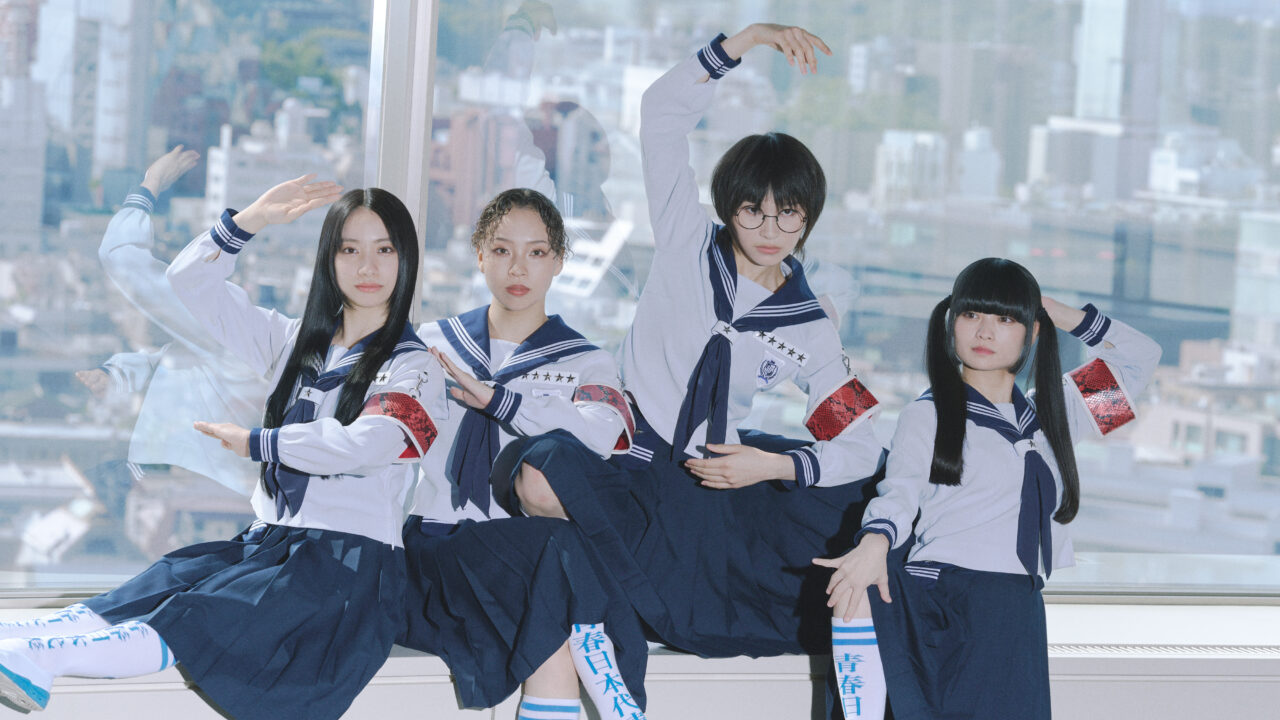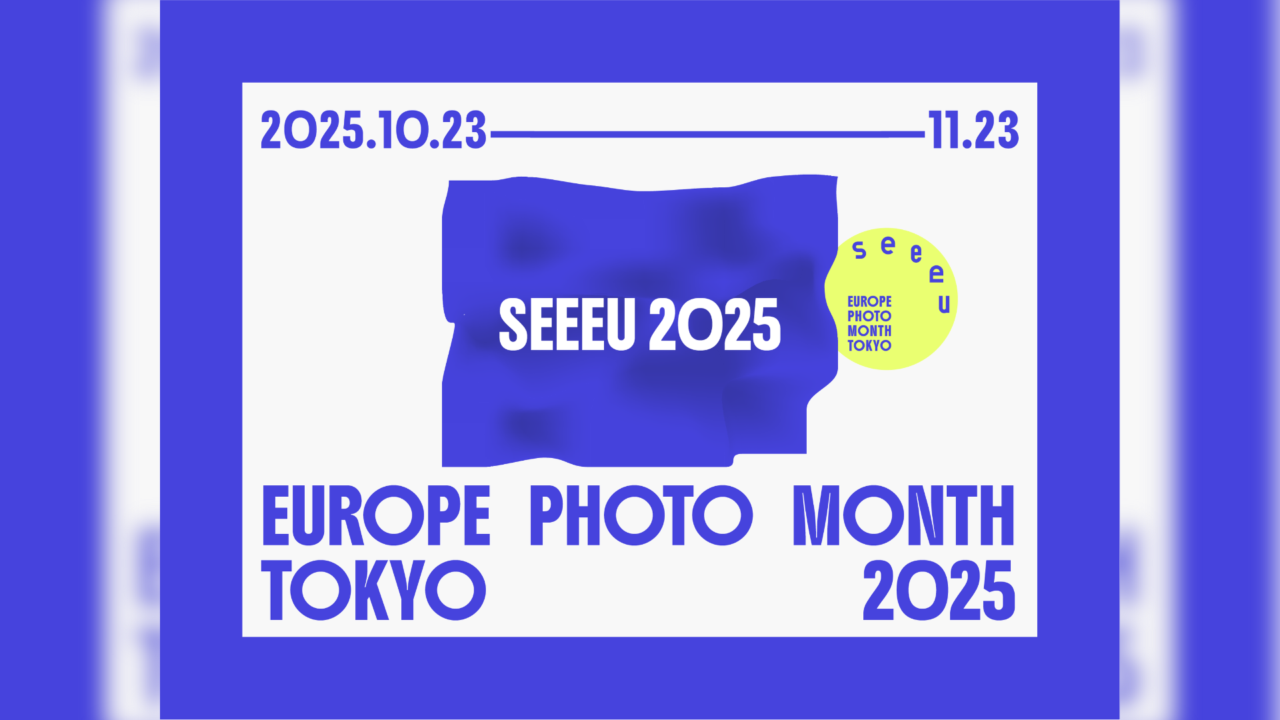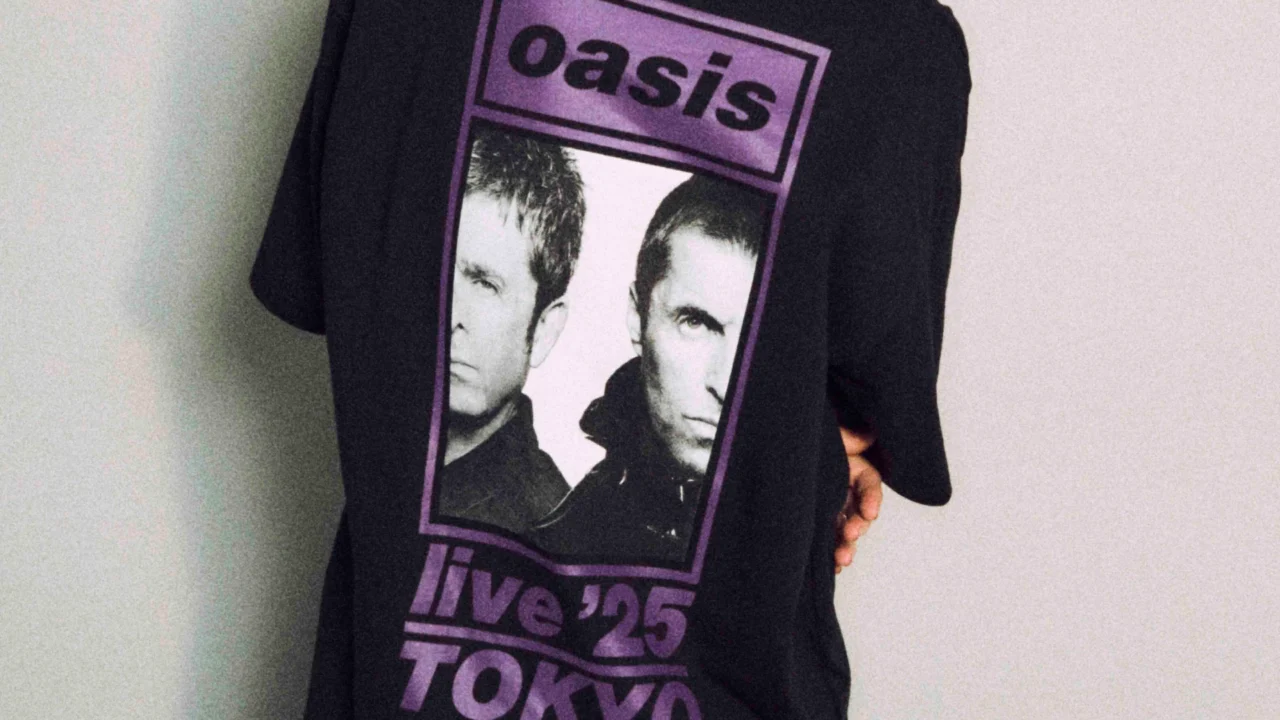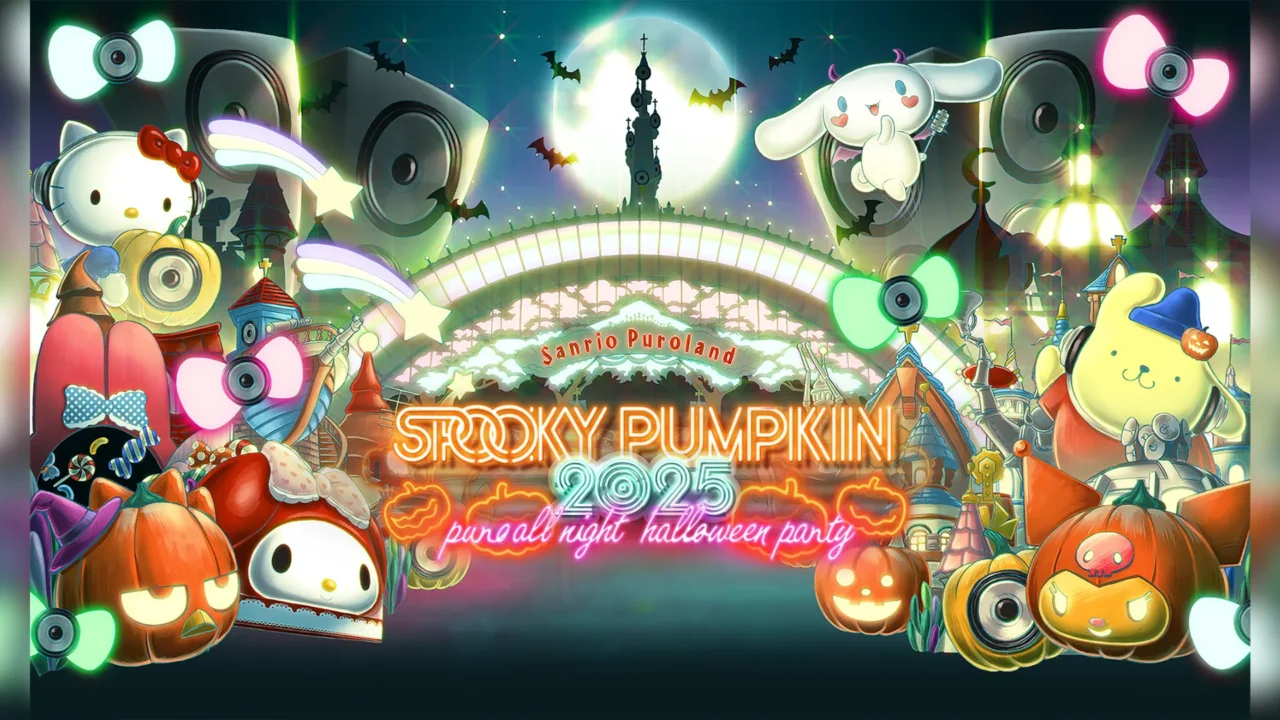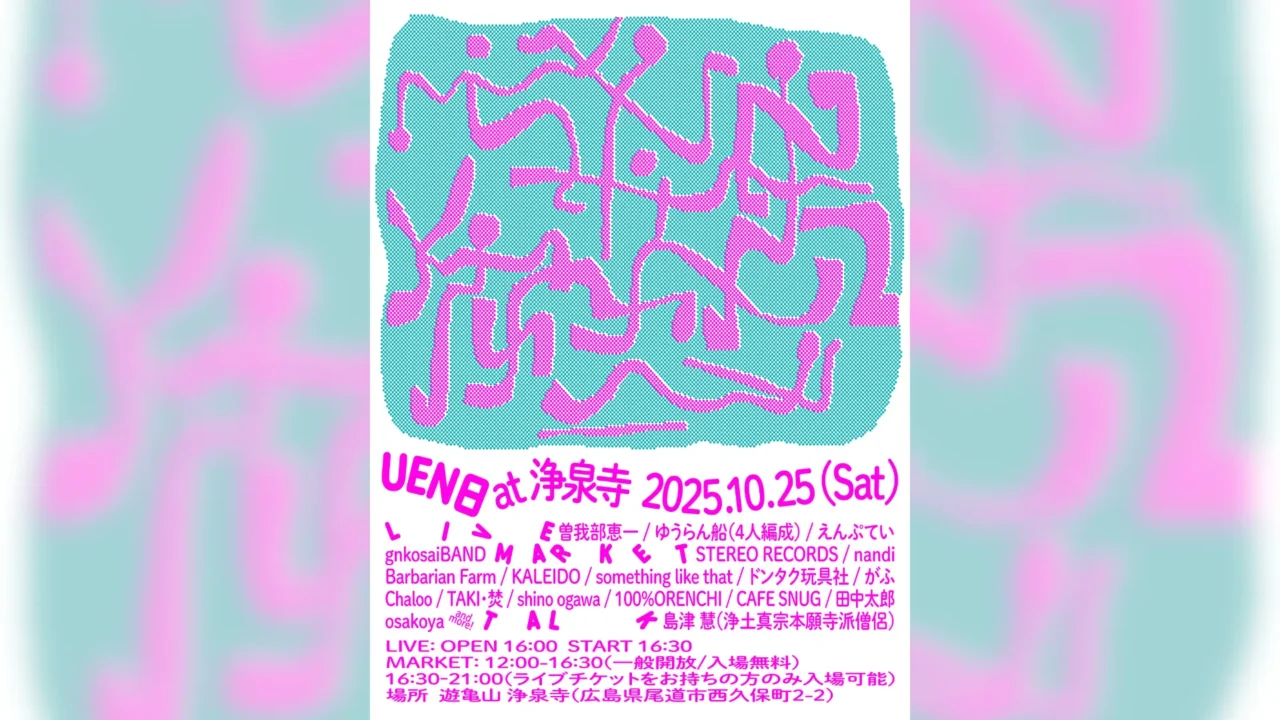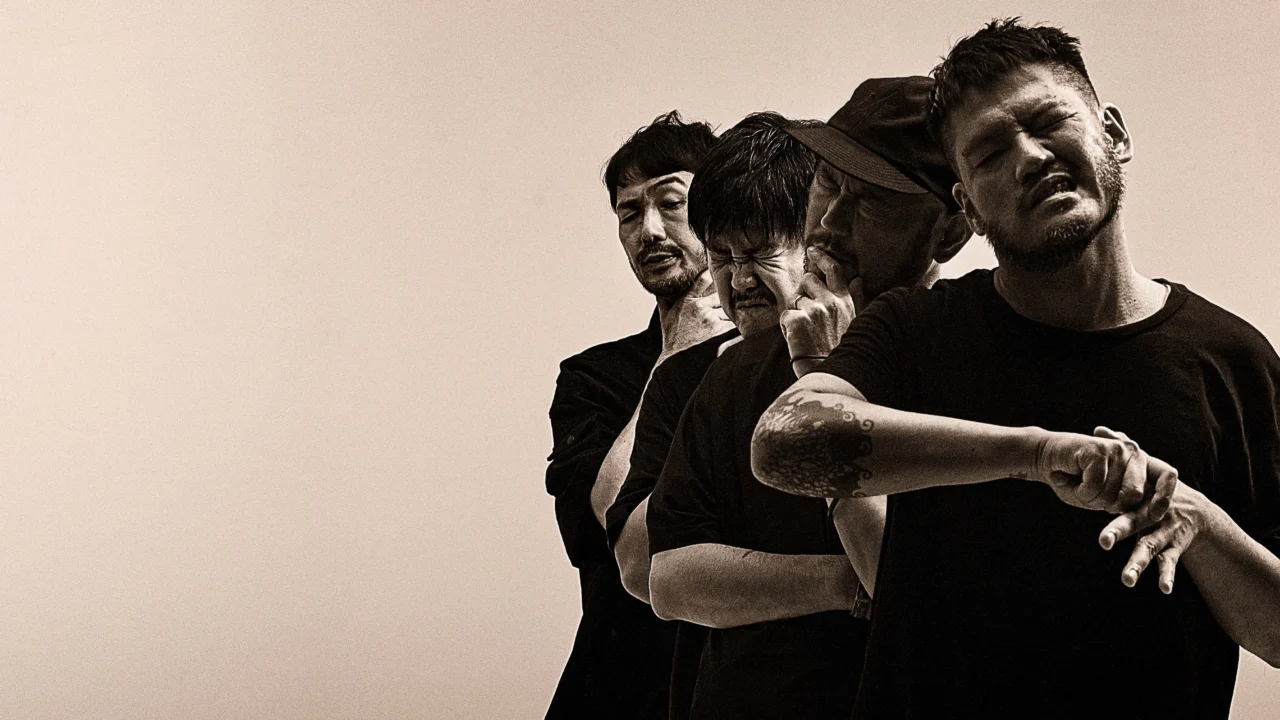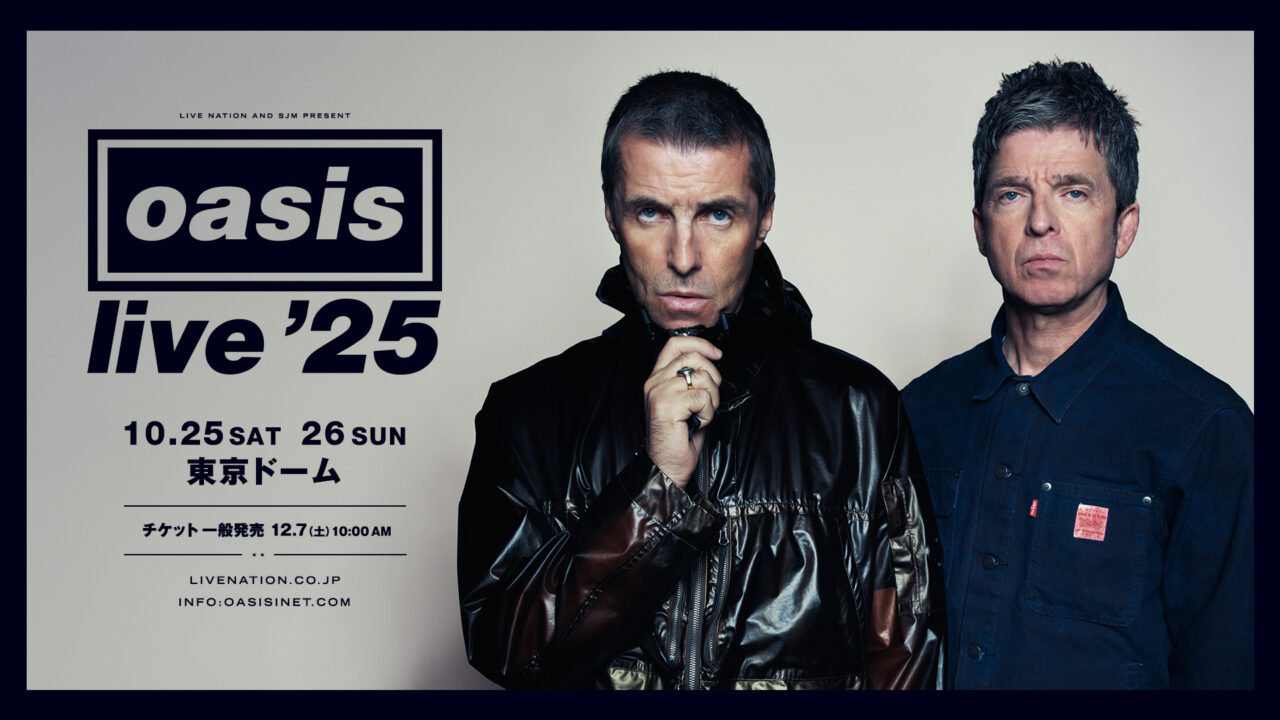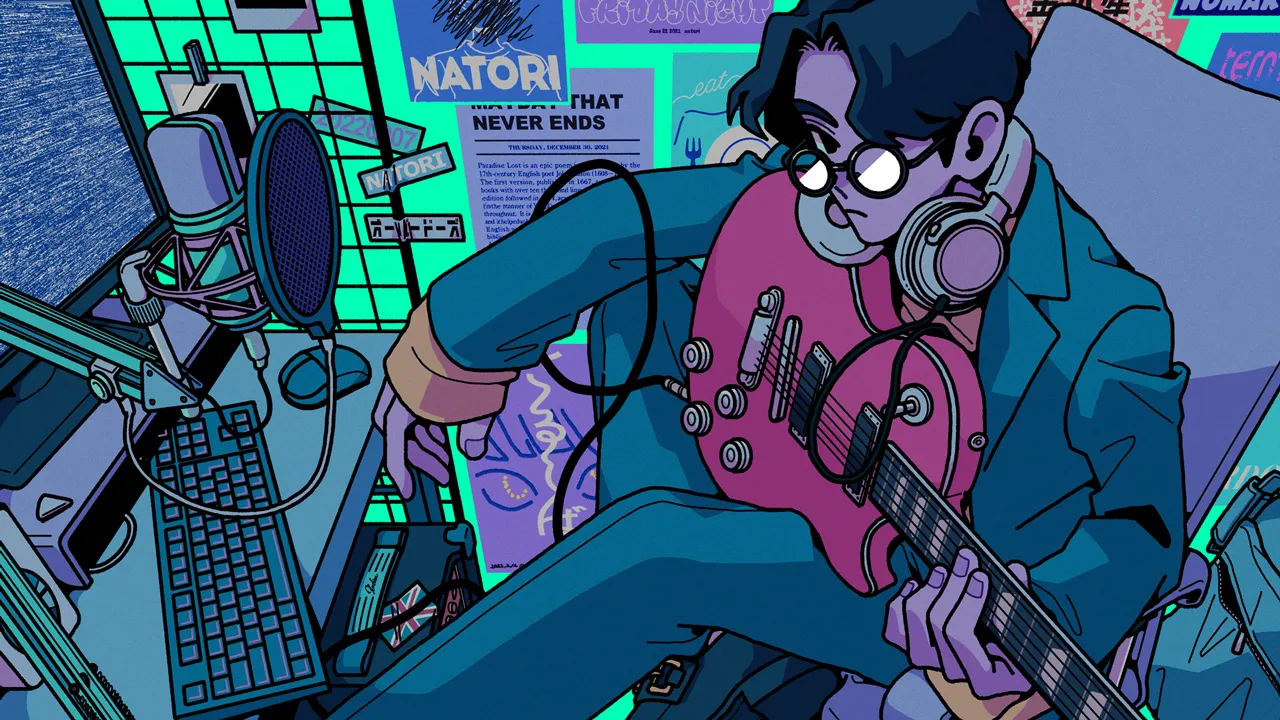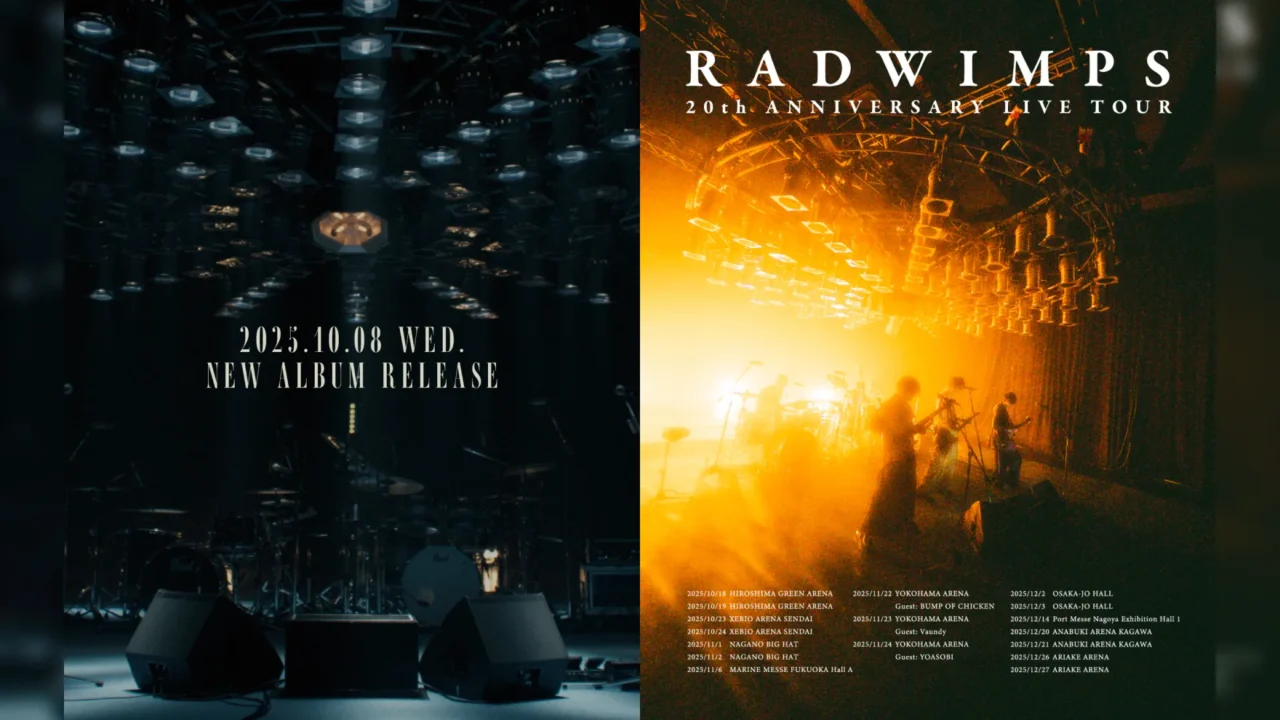Five years after her previous album, Ampelsands (2020), mei ehara returns with her third release, All About McGuffin, which she describes as “the final work of the first chapter.” The album carries a sense of duality: what she holds close now, what she has lost or let go in the past — everything matters, yet everything is replaceable. It is a record of her journey, marked by pain and uncertainty, and at the same time, a story for all of us living in the same era.
Over the past five years, mei ehara has confronted her inner world deeply, learning to distinguish between what she can let go of and what she cannot. Now, she says, she is “living entirely for herself.” Speaking with her during her first headline tour in the United States, she shared the mindset behind All About McGuffin—a work that is at once a singular narrative, a fantasy, an RPG-like adventure, and a raw, intimate chronicle—and reflected on her ever-evolving “now.”
INDEX
A Sense of Realization, Not Transformation
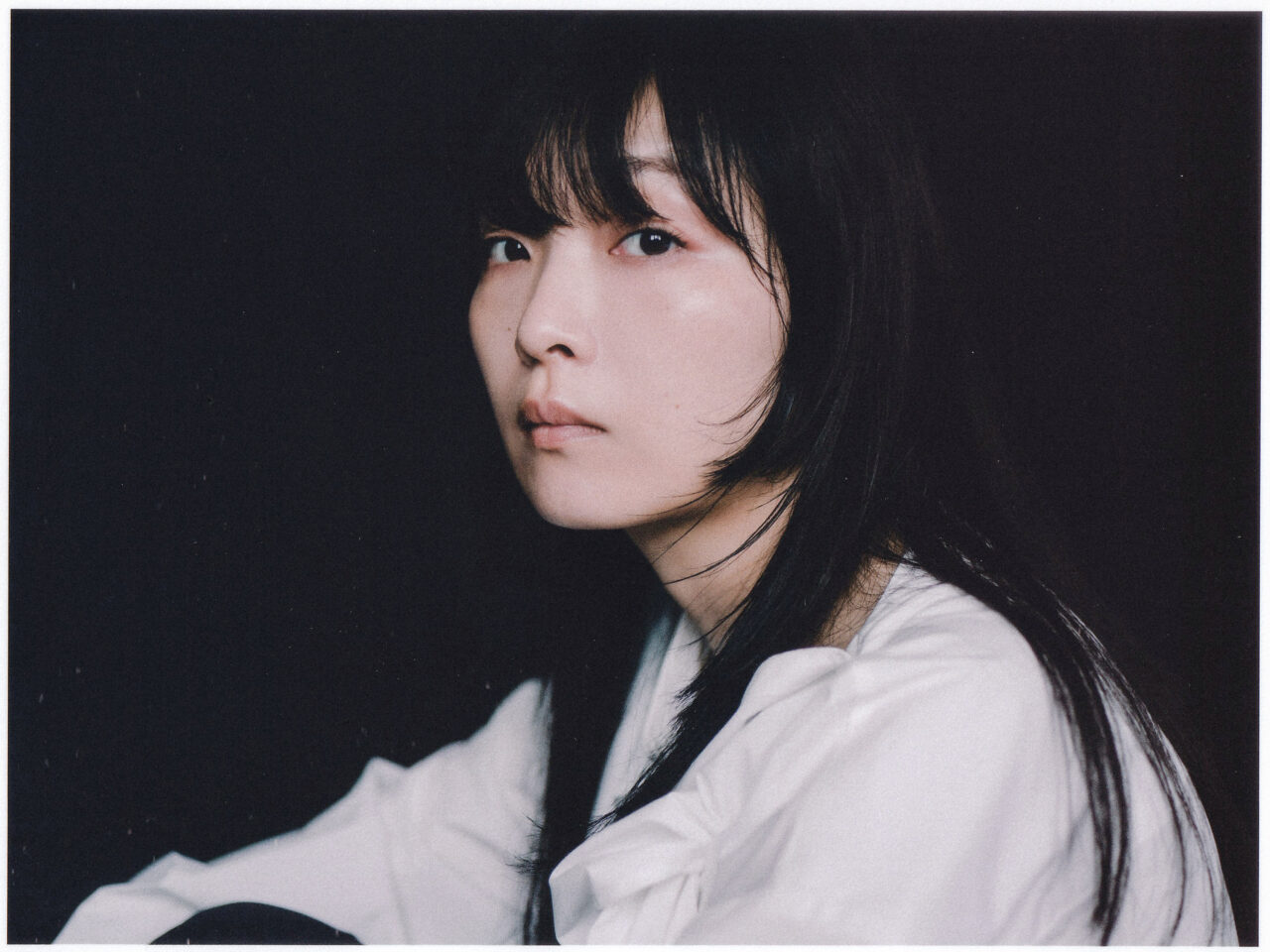
Singer-songwriter / Writer. She began recording music at home during her student years and debuted in 2017 with her first album, Sway, produced by Gohei Tsujimura of Kicell, released on Kakubarhythm. In 2020, she released her self-produced second album, Ampersands. She contributed to American singer-songwriter Faye Webster’s 2021 album, I Know I’m Funny Haha, and joined Webster’s U.S. tours in 2024 and 2025 as a supporting act. In September 2025, mei ehara released her first full-length album in five years, All About McGuffin, followed by a tour across four U.S. cities. She will hold a solo live performance at WWW X on October 19 after returning to Japan.
(Photo: Naoki Usuda)
So right now, you’re in the middle of your headline tour across San Francisco, Los Angeles, New York, and Chicago (September 23–30), with most shows sold out?
ehara: Yes, that’s right. My previous two tours were as the opening act for singer-songwriter Faye Webster, and she had often mentioned that she liked my music. Because of that, it felt like the audiences were already welcoming me. So I approached it wanting to support Faye’s tour and make it the best experience possible for everyone.
ehara:But this time, it’s mostly people coming specifically to see me, so I was honestly a little anxious about how they would react. I still don’t fully understand what it is about my music, singing in Japanese, that resonates with them. That said, I just finished the shows in San Francisco and Los Angeles, and when I actually performed, it turned out that everyone was genuinely looking forward to seeing my live performance. They were listening closely and really watching, which was such a relief.
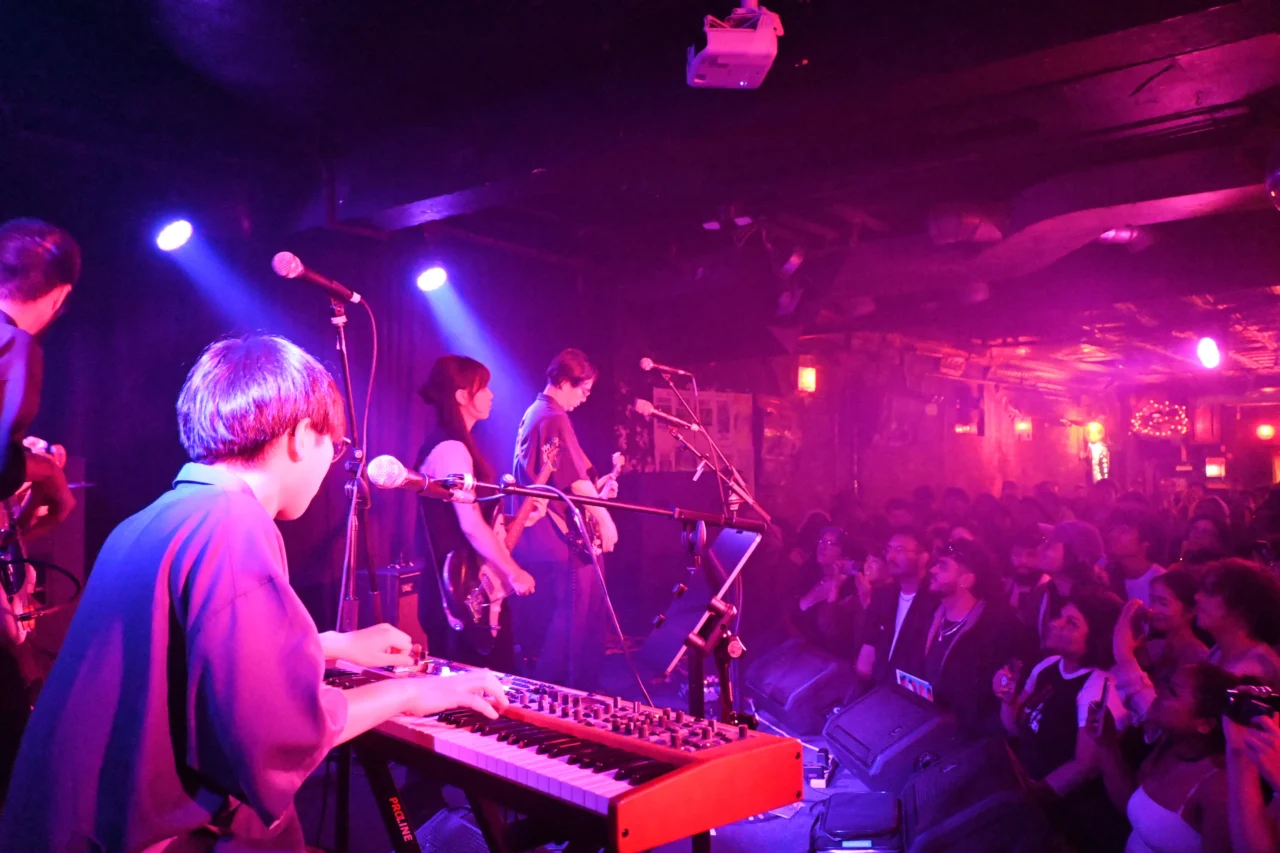
Has performing and creating music in the U.S. changed you in any way?
ehara: Honestly, I never imagined I’d have a life where I’d perform live overseas… So it’s not so much a sudden, eye-opening change as it is realizing things I simply didn’t know before. For example, the way people think about sound in America versus Japan, or how different a place and environment can make things—it made me realize my perspective had been pretty narrow.
If I had to say, I used to want to record songs with the same set of members for as long as possible. But now, I feel it might be good to try working with a wider variety of people. For example, bringing in a different producer for each track, performing songs that I wouldn’t write myself but are offered to me, or collaborating with other musicians—things like that are worth exploring.
INDEX
After the Last Release: Finding Solace Amid the Pandemic
You released your first album in five years, All About McGuffin, this September. You’ve said that you approached this album as “the final work of the first chapter” for yourself.
ehara: That ties back to what I mentioned earlier. In terms of how the songs were created, this album isn’t drastically different from my previous work. Of course, there are new elements and I experimented with some new directions, but basically, it feels like a continuation from my first album, Sway (2017). I don’t know exactly how it will turn out, but I had a feeling that my next work would bring a big change, so I wanted to mark a pause here with this album. I decided to make it one where I could pack in everything I wanted to do.
You’ve mentioned that the past five years leading up to this album involved various struggles.
ehara: Yes. My second album, Ampersands (2020), was released right in the middle of the pandemic, so I never really knew how listeners received it. I had joined a label, quit my job to focus entirely on music, and created it with a new band lineup… and yet, the outcome felt uncertain. It didn’t make me lose motivation, but it did leave me unsure of how to approach my next album.
ehara: When you’re making music, it’s hard to say you have much financial stability. During the pandemic, I became distant from a lot of people and stopped seeing them altogether. There were also many things happening in my personal life, so I naturally ended up spending a lot of time reflecting on myself. I wanted to understand the root of why I fall into certain ways of thinking, so I started going to counseling and reading books, continuing to study and learn on my own. Then, around July last year, suddenly, a lot of things just clicked.
Looking back now, I’m not entirely sure why it was necessary to face myself so deeply at that particular time. But at the moment, I just felt, “If I don’t resolve this now, I won’t be able to move forward.”
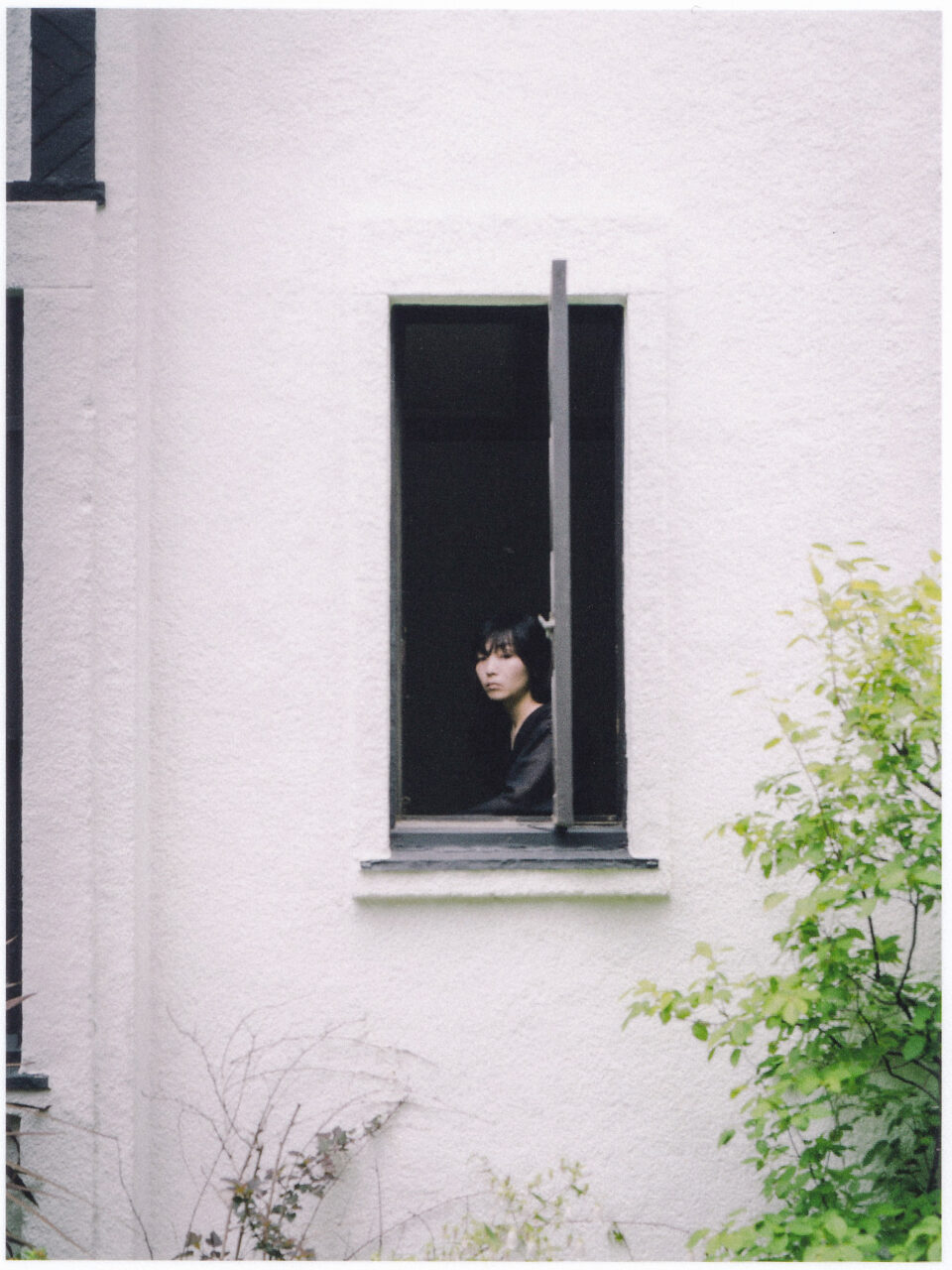
Was there a specific event that changed you?
ehara: I wouldn’t say I suddenly found a “solution” or the “right answer.” It feels more accurate to say that I’ve learned to let go. Not getting caught up in endless worries or dwelling on things has allowed me to focus purely on music. Right now, I feel like I can live entirely for myself. I’ve learned to let go when I need to, but at the same time, I can also hold my ground when something truly matters to me.
How do you think this shift in mindset is reflected in your new album? You wrote in your release notes that “simplicity is a very romantic thing.” What did you mean by that?
ehara: That’s not something I specifically realized while making this album, but I’ve always felt there’s something really appealing about being a little unpolished or imperfect. Everyone—including myself—has parts that are incomplete or not fully matured. You see that in films too, where the protagonist is still figuring things out. Struggling, worrying, or stumbling through life is something anyone can relate to—and I think it’s also something deeply endearing.
INDEX
Experience the Album A Journey Through an RPG-Like World
Listening to the album, the cover art, reminiscent of an RPG or retro game, gave me the sense of being immersed in a rich, unfolding story. It even reminded me of Kazuo Ishiguro’s The Buried Giant.
ehara: I wanted the album to feel like a single narrative, or even like an RPG game. There’s something special about RPGs — you can fully dive into a world on your own. I designed the album so that, listening from the first track to the last, you can experience it as a continuous story.
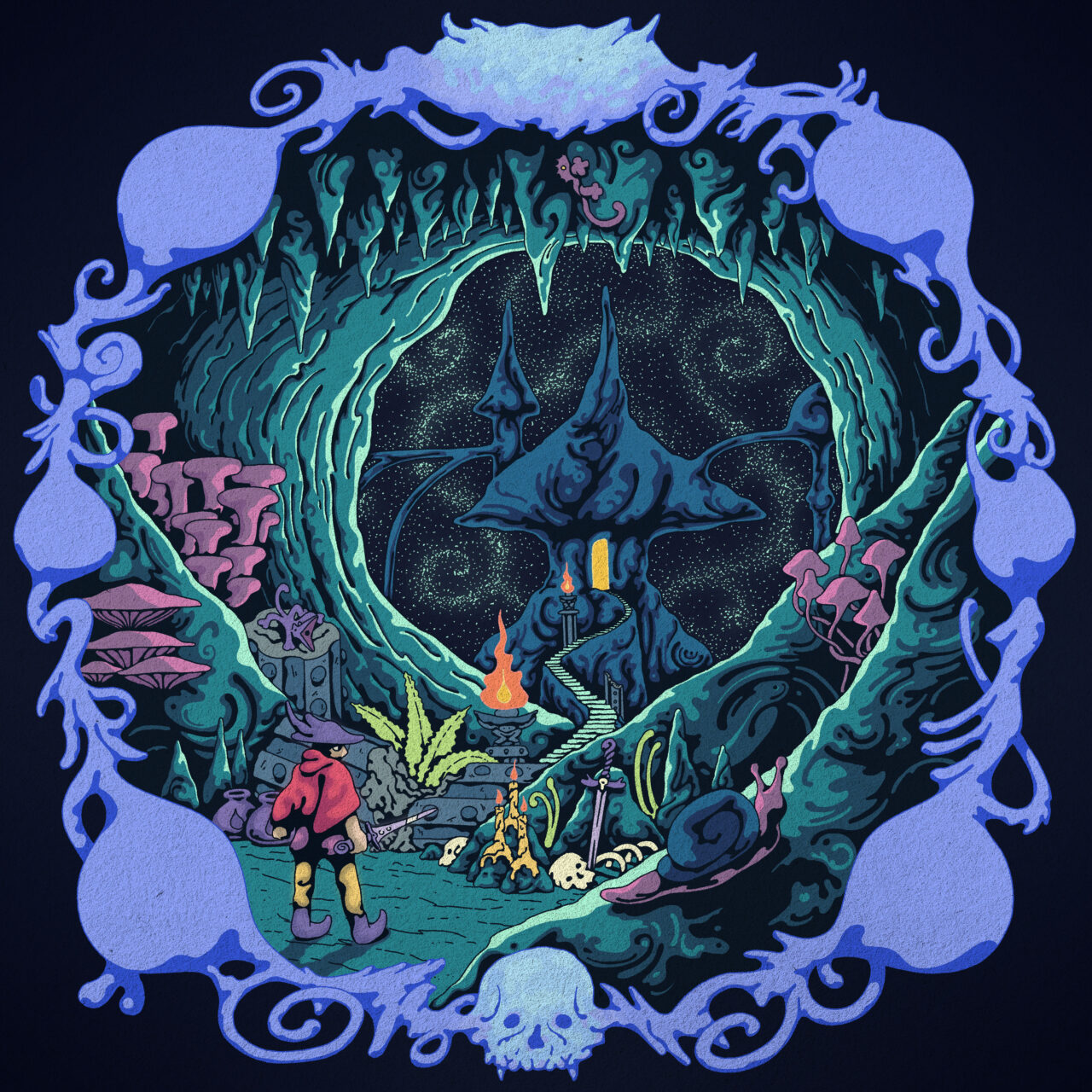
ehara:It’s not that I had decided from the very beginning to structure the album this way; the direction only became clear partway through the process. I had always planned to include “Game Over,” “Picture,” and “Mada Hayai Kudamono” on the album, but when I was figuring out the rest of the tracklist, I realized that “Mada Hayai Kudamono” clearly reflected my own growth and changes. That song became the anchor for the album, giving the project a clear direction and purpose as I worked on it.
ehara: And once “Opening Theme” was finished, the album’s purpose became even clearer. I felt that if the album was to be treated as a single story, like an RPG, a movie, or a novel, it needed an introduction. The song captures the feeling of stepping forward through darkness, where trials and struggles lie ahead, with a sense of “there’s no choice but to keep going,” while also conveying the excitement of a beginning. It incorporates lessons I’ve learned and my current state of mind over the past few years, but above all, I wanted it to be a track that draws listeners into the story from the very first song.
this ties into what you were just saying, but would you say that “games” are one of the major motifs of this album?
ehara:As I mentioned earlier, I wanted to capture the feel of an RPG, so while making the album, I found myself recalling various games. I really love game music. Since it has to play while you’re actively playing, it’s basically structured to loop continuously. I think my fondness for game music naturally makes me lean toward loops in my own songs. Even in daily life, I often have gameplay videos or game soundtracks playing while I work.
When I write songs, I usually imagine them as if they’re music videos. For example, when I worked on “Kyodai na Mono ga Kuru,” I pictured visuals that are mystical, terrifying, and melancholic, similar to Shadow of the Colossus. I even watched cinematic 4K gameplay videos to think about what kinds of sounds would fit into the track.
“Huge things coming” is one of the most striking tracks on the album.
ehara: The basic version of the song was actually created quite a while ago, and I even performed it a few times in live shows after releasing Sway. But it never felt quite right, so I kept it on hold. Once the album’s direction became clear, I revisited it and ended up changing everything except the title and the opening verse to complete the track.
ehara: I wanted this song to serve as the climax of the album, but the ending of All About McGuffin isn’t meant to present a definitive conclusion. I wanted to leave space for listeners to relate in their own way —to feel, “Yeah, something like this can happen.” The song conveys a sense of something overwhelming and almost oppressive arriving, swallowing you up. Whether that “something” is a real object or an event isn’t clear. It’s neither a happy ending nor a bad ending, and I thought I could capture that ambiguous mood by incorporating the unique atmosphere of the game Shadow of the Colossus into the music.
INDEX
Now: Everything I’ve Held On To and Let Go
The band members from your previous album, Masamichi Torii (Triple Fire), Kouki Hama, Coff, and Naruyoshi Numazawa, participated again. How did you work together to create this album?
ehara: For this album, most of the arrangements didn’t change much from the demos. That’s often the case for me, not just with this album, because by the time a demo is finished, I usually feel fairly satisfied with it, so the tracks don’t shift much from the initial concept to the final product. With the second album, we had cases where the members’ input and strengths changed the demos significantly, adding new ideas collaboratively. But for All About McGuffin, I had them play almost exactly what was in the demos. I feel a little sorry if that made the members a bit bored.
Since the demos didn’t change, the band seemed a bit uneasy, saying it felt “too clean,” and I did have moments of doubt about whether I should adjust things. But ultimately, I decided to stick as closely to the demos as possible.
Even so, I did struggle internally. Thoughts like, “Should I make this more pop?” or “Should I arrange it so it’s more danceable?” would cross my mind. My musical knowledge is still limited, so sometimes what I naturally create has dissonances, unusual unisons, or strange elements—but I like that, and I think those arrangements are good. In the end, I reached a point where I could release the music exactly as it came from me, without second-guessing it.
You mentioned in another interview that you changed the way you write lyrics for this album, aiming for expressions that listeners could connect with their own experiences. That seems to have made the album very accessible. Why did you decide to try this new approach now?
ehara: I was getting tired of writing lyrics that only I could understand. Sticking to my previous methods made me lean toward unusual expressions and words that I rarely use in daily life, and it started to feel boring.
I really like tanka poetry, which has rhythm and strict syllable limits. It requires skill and creativity to convey a scene or a small, ordinary moment. I love tanka that use simple language yet do this skillfully. For example, if someone reads a line like “Light streams through the window at 4 PM,” each person will imagine a different scene, but because the words are simple, the possibilities for imagery expand.
Listeners might imagine something very different from the image I intended in a song, but that’s a matter of how closely I can approach my intended expression with careful word choice. Lately, I’ve wanted to challenge myself to do more of that.
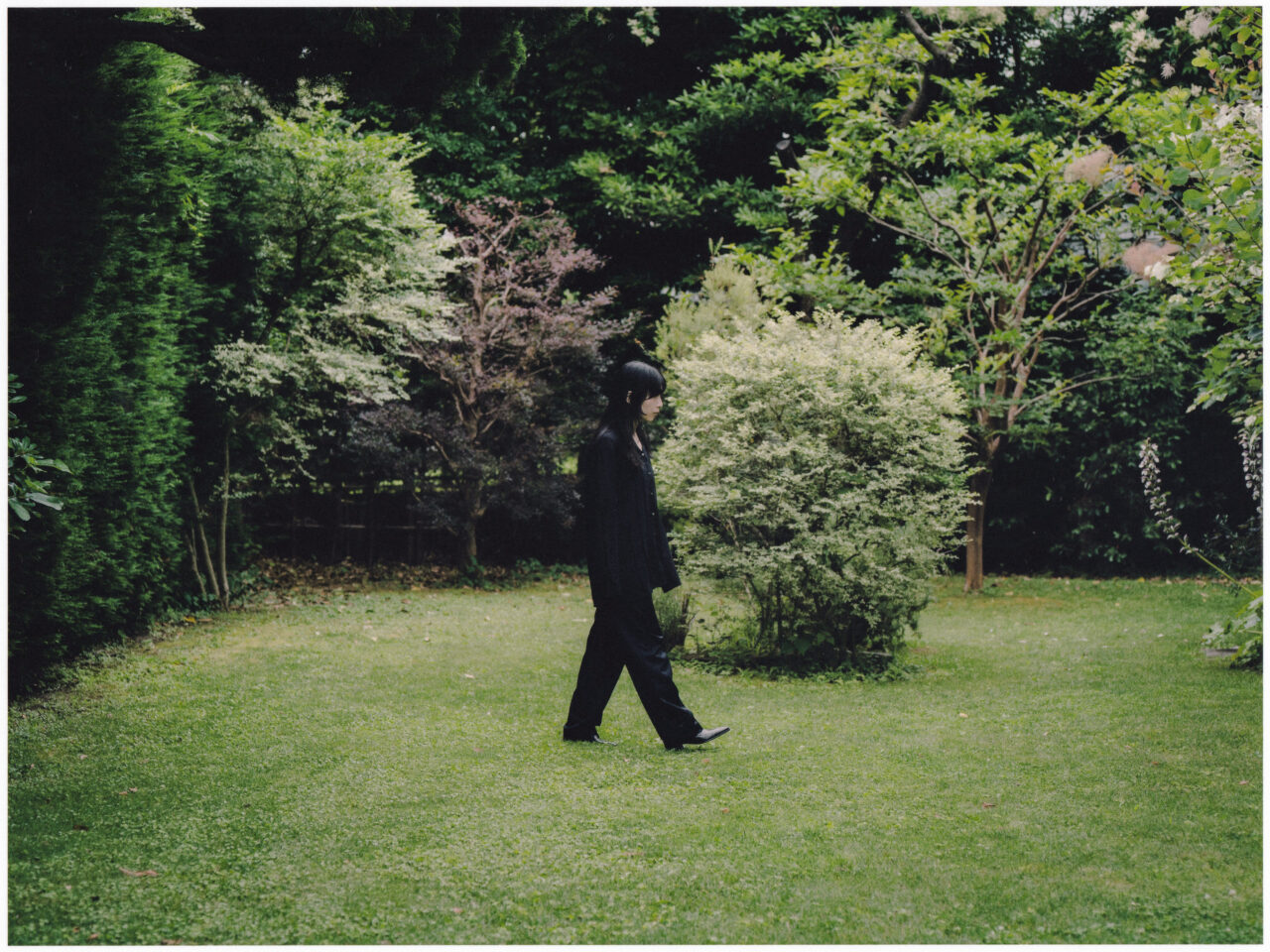
ehara: In addition, I’ve also been challenging myself to write lyrics that are entirely fictional, not just drawn from real experiences. Until now, I often based my lyrics on things that actually happened, but this time I wanted to create themes that come purely from my imagination.
But this isn’t about trying to directly convey my feelings or message to the listener. It’s more about giving them familiar, everyday words as a starting point, so they can feel something and expand on the impression or context of the song. I thought that approach might make my music feel even more engaging and interesting to listen to.
The origin of the title has come up in various interviews, but could you share your thoughts once more? “McGuffin” usually refers to an object or element that drives a story—like the suitcase in Pulp Fiction. Why did you decide to name the album All About McGuffin?
ehara: The “All About” part reflects a kind of respect for everything—the things I’ve let go, the things I’ve held onto, and the process of creating this album. I don’t want to dismiss any of my experiences. If I tried to pinpoint exactly what I still have and what I’ve lost, it would take too much effort—and honestly, I couldn’t be completely precise.



